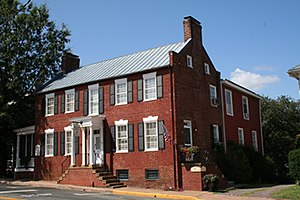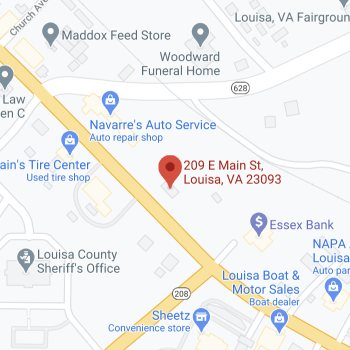Bethel Builders, LLC is your new home builder in Orange County, Virginia.
Orange County is a county located in the Commonwealth of Virginia. As of 2010, the population was 33,420.[2] Its county seat isOrange.[3]
History
The area was inhabited for thousands of years by various cultures of indigenous peoples. At the time of European encounter, the Ontponea, a sub-group of the Siouan-speaking Manahoac tribe, lived in this Piedmont area.[4]
The first European settlement in what was to become Orange County was Germanna, formed when Governor Alexander Spotswoodsettled 12 immigrant families from Westphalia, Germany there in 1714; a total of 42 people. Settlers established the legal entity of Orange County in 1734[5] from a portion of Spotsylvania County. Unlike other counties whose boundaries had ended at the Blue Ridge Mountains, Orange was conceived of as extending to the Mississippi River and Great Lakes. The colony of Virginia claimed the land, but very little of it had yet been occupied by any English. For this reason, some contend that Orange County was at one time the largest county that ever existed.[6] This condition lasted only four years; in 1738 most of the western tract was split off into Augusta County.
Orange County was named for Prince William III of Orange, sovereign Prince of Orange of the House of Orange-Nassau by birth. From 1672 he governed as Stadtholder William III of Orange (Dutch: Willem III van Oranje) over Holland, Zeeland, Utrecht, Gelderland, and Overijssel of the Dutch Republic and at the same time Protestant King of Great Britain andIreland. Founded by Ulster-Scots settlers in the 18th century. The family name of William of Orange was derived from the dynasty’s ancestral origins as feudal lords of the French town of Orange, which was named by the ancient Gauls in honour of a Celtic water deity.
President James Madison‘s home, Montpelier, and the ruins of Virginia governor and U.S. Senator James Barbour‘s former home, Barboursville, are located in the county. Both are listed on the National Register of Historic Places. President Zachary Taylor was born here.[7] During the Civil War, the Battle of the Wilderness took place in the County in May 1864. Portions of the battlefield are preserved as Fredericksburg and Spotsylvania National Military Park, established in 1927.
Geography
According to the U.S. Census Bureau, the county has a total area of 343 square miles (889 km²), of which 342 square miles (885 km²) is land and 2 square miles (4 km²) (0.50%) is water.
Adjacent Counties
- Madison County – northwest
- Culpeper County – north
- Spotsylvania County – east
- Louisa County – south
- Albemarle County – southwest
- Greene County – west
Arts and culture
Museums and other points of interest
Orange County is the location of a number of National Register of Historic Places-listed properties and districts, including Montpelier and Barboursville.
The Wilderness Battlefield
The Battle of the Wilderness was fought in Orange County on May 5–6, 1864. The battle marked the first occasion legendary Generals Ulysses S. Grant and Robert E. Lee would face each other in battle. The fighting at the Wilderness was also the first battle in Grant’s Overland Campaign that would ultimately lead to the fall of Richmond and Lee’s surrender at Appomattox.
Over 160,000 troops were engaged at the Wilderness in a bloody, see-saw, battle that saw both sides on the brink of destruction. When the guns fell silent on May 7, over 29,000 soldiers lay dead or wounded on the fields at the Wilderness, and Grant’s Union army was able to disengage and press on toward Richmond.
Today, the Battle of the Wilderness is a part of the Fredericksburg and Spotsylvania National Military Park, which has preserved 2,773 acres (11.22 km2) of the original battlefield. The park is closed on New Years Day, Thanksgiving and Christmas Day. Otherwise the park grounds are open from dawn to dusk on a daily basis.
Ellwood
The Ellwood Manor is the only surviving house that witnessed the Battle of the Wilderness in May 1864. During the battle Ellwood became a base of operations for the Union Army as Union General Ulysses S. Grant made his headquarters nearby. Ellwood would also play a role in the Battle of Chancellorsville in 1863 when Confederate General Stonewall Jackson, who was wounded during the battle, had his arm amputated and buried in the family cemetery at Ellwood. Following the battle at Chancellorsville, Ellwood served as a Confederate hospital.
In 2008, Ellwood was named “Favorite Virginia Civil War Site” by the Rappahannock Electric Cooperative’s “Cooperative Living” magazine.[9]
Doctor Holladay House
Formerly called the Doctor Holladay House, the Holladay House in Orange, Virginia (c.a. 1830) is on the nationally-recognized Journey Through Hallowed Ground. Named for Dr. Lewis Holladay, a prominent Virginia physician, the Holladay House has witnessed almost two centuries of American history. The building is historically significant because it is one of only a few antebellum structures still standing in Orange, Virginia.
Since approximately 1830, the Holladay House has served as a mercantile store, a residence, a doctor’s office, and a Virginia bed and breakfast inn. In the early 20th century, a private schoolhouse for local children was also on the property. Only a handful of proprietors have owned the home, and the Holladay family was its steward for over 100 years. The Holladay House still boasts much of its original woodwork, including floors, mantels, doors and period antiques from the Holladay family.
Now a Virginia bed and breakfast inn, the Holladay House is one of the two oldest standing structures in historic downtown Orange, and is registered with the National Register of Historic Places as part of the Orange Commercial Historic District. It has been a landmark on Main Street for generations.
Portions of Orange County lie within the Monticello AVA. Several award-winning wineries are within the county, includingBarboursville Vineyards, Burnley Vineyards and Horton Vineyards.
Towns
Incorporated
Unincorporated
Source: Wikipedia












